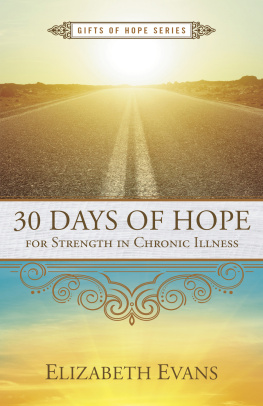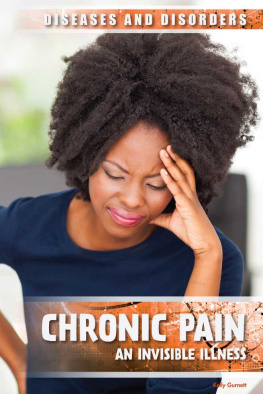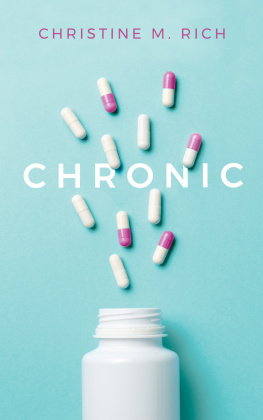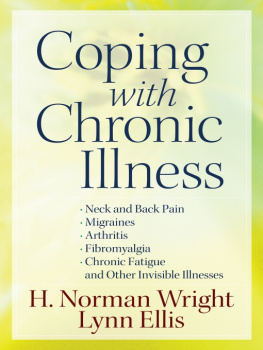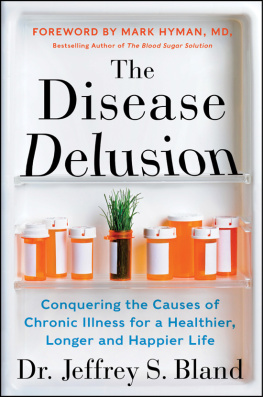 | Chapter 1 |
THE JOURNEY TO WELLNESS
Sometimes you have to let go of the picture of what you thought it would be like and learn to find joy in the story you are actually living.
Rachel Marie Martin
W e are all on a journey.
It has taken us time to recognize that we have a role and a voice in choosing the path that our journey takes, and we would like to share with you tools for how to use your mind and voice. We did not start out seeing a clear map to follow, nor did we receive a checklist of what we would need on our way. We are two women good at planning, yet somehow, we ended up on a trip without a map!
Your journey will be your own; no two are the same. However, like us, you will come to many crossroads, face many obstacles, and have many choices to make along the way. We think you are in charge of your wellness, and in charge of how you choose to think about it. Come along with us and lets get started with experiencing health in a new way.
AWAKENING
When you were young, did your dreams include having a chronic illness? Probably not! It may have never even crossed your mind. We dreamed of fairies and ballerinas. Our dreams never included a chronic illness. But now as adults, we dream big and choose to integrate our dreams with the reality of living with Parkinsons disease. Your experience may include a different diagnosis, but our message is universal. We have found like-minded people who are essential to our health, and we work daily to seek gratitude and collect joy. We recommend these aspects as core elements in the journey to wellness.
At the time we were newly diagnosed, we had not met any other people in midlife with Parkinsons, especially those who were still negotiating their career or raising children. We didnt understand the importance of having supportive people around us. We were scared and unsure where to turn.
That summer, the World Parkinson Congress was held in our city, Portland Oregon. This congress is an international meeting of scientists, physicians, clinicians, caregivers, and people living with Parkinsons disease. We attended in order to better understand chronic illness and to find out what was happening to us. We wanted to hear about new therapies to treat symptoms, innovations, and most importantly, to find hope for a cure. What we sought was information, what we found was knowledge. There were nearly 5,000 people from over 23 countries attending the conference.
One hallway featured a powerful exhibit titled This is Parkinsons by photographer Anders Leines. The highly emotive and personal images in the exhibit showcased proud young individuals living with Parkinsons disease. Their faces reflected self-respect and humor, and we could sense that these were people who had dreams. Many were like us. Examining each of the faces in the photos brought out strong feelings of admiration and loss.
We have experienced sadness over many aspects of our illness: grief over health, grief over loss of self, grief about what we each thought aging would look like. To move on to what is, I am a woman in midlife with Parkinsons disease, we first had to allow ourselves to grieve over how we expected our lives to be. We have found that talking with supportive friends or writing in a journal helped to guide us through the grief and ultimately to acceptance of this new life challenge. These tools, and others that we share in this book, continue to serve us well in the ongoing process of striving for wellness, and they can help you too.
REVISITING YOUR DREAMS
For much of adulthood, we are apt to put our dreams on the back burner. Productivity, independence, and achievement take center stage and are both encouraged and rewarded in our society. The focus in our lives is heavily swayed towards following the achievement path, while frivolity and daydreaming are discouraged.
The plans we had when we were young are often set aside to pursue practical routes that earn a living. However, one day we realized that this is the only life that we are given. For us, that day came with the diagnosis of Parkinsons disease. When we face a new hurdle, it is an opportunity to revisit and re-establish priorities. We are awakened to a new way of being and prompted to reevaluate our dreams.
Perhaps fairies and ballerinas are a bit far-fetched in our adult world, but we have learned to open our minds to remember our childhood dreams and find ways to incorporate them into our adult lives. We can do this in the stories we tell, the adventures we plan, and in the way, we think about ourselves. We choose to remember the magic in our childhood imaginations and the way those thoughts and dreams felt.
Now is the time to awaken those dreams and the possibilities that they offer.
At the World Parkinson Congress, we saw that opportunities still waited for us despite chronic illness. We told ourselves we would find a way in three years to attend the next one. We wanted to reconnect with this larger world and were primed for an adventure. Even the location sounded exciting: Kyoto, Japan. We had found a new dream to pursue.
Pause to reflect:What were your dreams as a child? What did you want to be when you grew up? Are there things that you have always wanted to try or accomplish?
Lets Do a Crazy Clap: Nancy
It is fitting that Kat and I write about our childhood dreams of fairies and ballerinas. Thats the kind of kids we were, even though Kat never did see a fairy and I never got to wear a tutu. I became a lot shyer and more restrained as I got older. It was a stretch for me to become a childrens librarian, but I loved being able to get down on the floor to play, imagine, and read with babies, toddlers, and three-year-olds. It was physically energetic work, and I was moving all day long, was healthy, and my body rarely felt awkward or stiff.
A highlight of being a childrens librarian was working with adorably cute kids. I stamped little hands, sang nursery rhymes, waved colorful scarves, fell down, and got back up time after time to Ring Around the Rosie. I adored being a childrens librarian.
At storytime, I liked to start out with a rhyming game that began Lets do a crazy clap. We would wave our arms high above our heads and wiggle our fingers wildly before we clapped our hands. The back of the storytime theatre had a large window, and one day I caught a glimpse of my reflection doing the crazy clap. My left arm was up high, waving, but the other arm was barely moving. Something was wrong with my right arm.
Over several weeks, I tried different stretches to unfreeze my shoulder, but the arm remained limp and slow to respond. My online searches didnt yield any results for why one arm no longer tracked the other. I was confusedand starting to worry. I felt sad at storytimes because it reminded me that something was feeling very, very wrong. I worried that I wouldnt be able to continue to do the job that I loved, and worst of all, I couldnt think of one single person in the same situation.
WHY TELLING YOUR STORY MATTERS
Stories of our childhood and thoughts about our futures and what it would be like to grow up can be a powerful guide to crafting our story as adults. People use stories to make sense of the world and to share that understanding with others. Since ancient times, spoken word and oral histories have been the way we pass down our knowledge. Our stories mark our legacy: they say we were here, we lived on this earth. Many of us can talk about a pivotal time when our lives were irrevocably changed, and we use that story to examine and illuminate the change.


